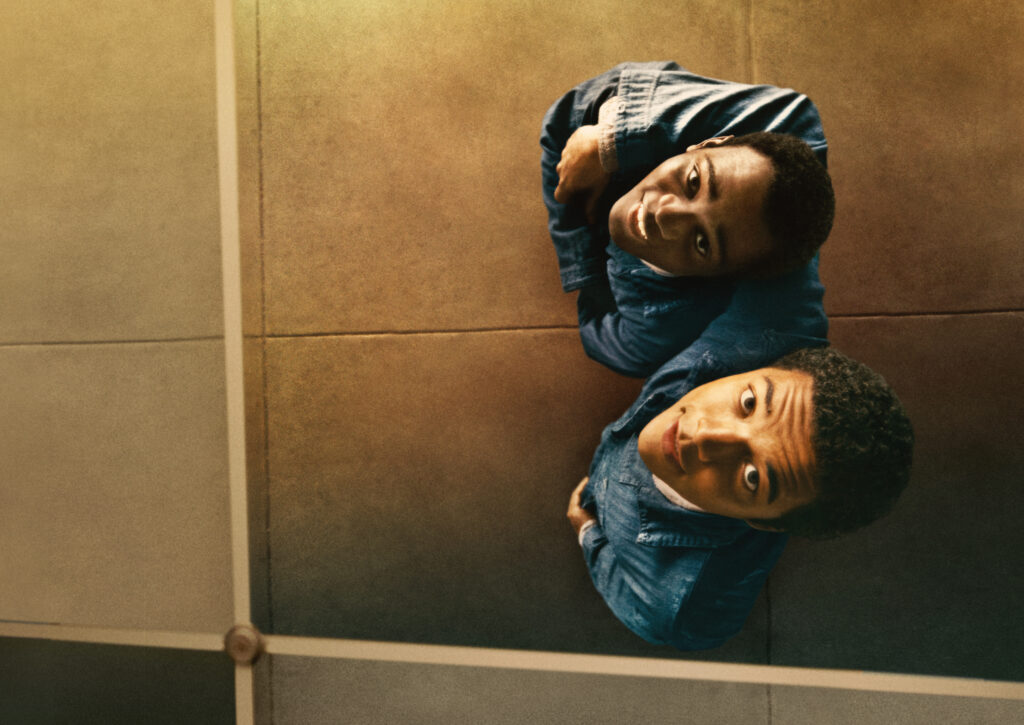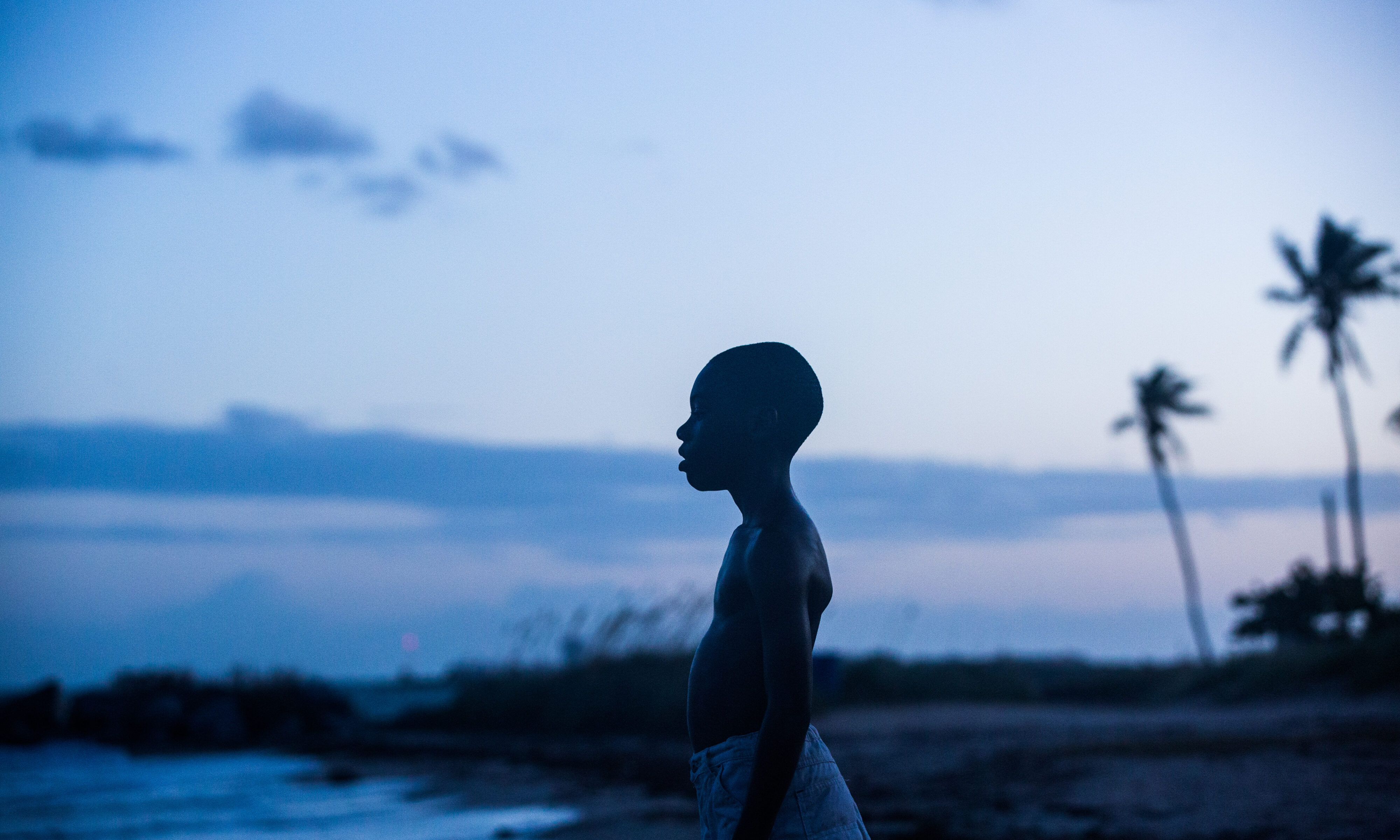In 2016, director Barry Jenkins’s film Moonlight became a sensation. The Oscar award–winning movie, which follows a young Black man as he grows up in the Miami projects, was a love letter to communities of colour, and specifically to their skin—the care and admiration conveyed through the film’s colouring and the loving way the dark-skinned characters were lit on-screen. The thoughtful colour grading was a revelation specifically because it has historically been so rare, with Black and Brown bodies often washed out on screen. Alex Bickel is the colourist behind Moonlight, who since then has gone on to work on other sensational—and innovative—films featuring BIPOC characters, including 2019’s Queen & Slim, 2022’s Everything Everywhere All at Once, and most recently 2024’s Nickel Boys.
Almost a decade after making history with Moonlight, Bickel talks to 3’s photo director Jalani Morgan about that period in his career, working with and for communities of colour, and how technology has made it increasingly easy to light dark skin appropriately.
Jalani Morgan: Before I even knew the language around colour grading, I was drawn to Ernest Dickerson’s work on [1990’s] Mo’ Better Blues. It compelled me because I saw my people [on-screen]. In your career, you’ve been trusted by Black and Brown creatives to take their imaginations and actualize them, in an industry that historically hasn’t allowed for those communities to be accurately represented. What was your introduction to representing Brown and Black folks, and what allows you to translate someone else’s ideas?
Alex Bickel: I’m really lucky; I’ve been able to work with filmmakers who tell stories that I think are important and connect with people. It’s not like I set out to become a colourist who was known for this; it’s just that my friend started making these movies, and I feel lucky to be a part of all this awesome work. I always feel slightly uncomfortable speaking about this topic because I’m a white dude who gets to make some pretty great films with Black and Brown people in them. So there’s always a small bit of discomfort from my end speaking about this. I just got into this to connect with people through storytelling. I read an interview with [cinematographer] Jomo Fray about our work on Nickel Boys, and he talked about how he approaches the scene by lighting [the character’s] face. That gives all the performers room to move around—it doesn’t matter where they are, they’re always going to be a part of the environment and a part of the scene. I build grades from faces out, for everyone, for every face of every colour. I figured out a long time ago that most scenes are close-ups. The things that people remember are faces. So I typically approach a scene by finding the core coverage between the actors in that scene and building my look around the contrast ratio that draws you into faces.
JM: That’s a very profound way of thinking because it gets to my point of why filmmakers previously found it difficult to light darker skin tones. It’s because they were not prioritizing the faces of the people in front of the cameras. It really tells me that there’s extra care in that for you, right?
AB: That’s what matters to me. [Faces are] what people are connecting with. People aren’t connecting with the bookshelf in the background; they’re connecting with the human beings in the story. The most radical thing about what I do is I actually expose for skin tone first, rather than start with the environment. I’ve been doing this for almost 20 years, and my process hasn’t changed much in terms of how I approach it: find the faces, find the characters in the story that are communicating what they need to communicate in that scene and build from skin tone out.
JM: That’s important to know because even though there’s innovation, it really has a lot to do with the people behind the tech, who are in care of the people that are in front of the camera. With Moonlight, did it feel like you were on the onset of new ways of being able to represent colour in that work?
AB: Colour was such a small part of [the movie] in my mind. When I think back on that experience, I definitely knew that movie was different, but [I think it was because the technology was democratized]. That was around the time I started my company, Color Collective. I started it with very little funds and no employees. The tools that we use to do this job used to cost $800,000, but then they suddenly started to cost $1,000. I think what did change was through the democratization of the tools at the high end of the workflow; it put it in the hands of people who didn’t spend 30 years as an assistant learning the old way to do it —maybe they just started experimenting and figuring out their own way to do it. And so because we hadn’t gone through the old [route], we didn’t know the ways it was supposed to be done. Barry, [cinematographer] James Laxton and I just kind of experimented and figured out the way we wanted to do it.

JM: Looking to the future in this industry, what’s something you’re excited about?
Get the
Three from 3
newsletter
Join our global community of sharp, curious thinkers to receive a carefully curated email of the three most important things to read, see and do this week.
Listen and learn.
Tune into Third Culture Leaders, a podcast hosted by our co-founder and publisher, Muraly Srinarayanathas.
Explore how leaders skillfully navigate multiple cultural landscapes, leveraging their diverse backgrounds to drive innovation and change.
AB: My career was made possible because of the democratization of software. It became more accessible and therefore I was able to jump in at a really young age and start exploring how to do this. There are still so few female colourists and so few Black colourists, and I think that is a legacy issue from limited access to technology and tools. My hope is that now that the software [has a free version], that the community of colourists and the people making it work will be broader and they’ll bring their own perspective to it that I couldn’t possibly imagine from a different life experience, and that that will change where it all goes. I think within the stories that we’re talking about, I’ve been listening to my filmmakers, who are bringing their perspective, and it’s really just my best interpretation, trying to use this technology to bring to life the images that are in their brains. So, I’m just most excited to see the young people who are doing it differently.
The most radical
thing I do is
expose for skin tone
rather than start
with environment
JM: One last question: What’s your favourite colour?
AB: Purple. Which is funny because the most purple movie I did was probably [2018’s] If Beale Street Could Talk. There’s a lot of lavender and green in there, even though people think of that as a mustard movie. [With that film,] they’d never made a motion picture stock out of Provia [a brand name of Fujifilm popular in the 1970s], and so no one had built a lot out of it. What I did was I bought a bunch of rolls of it, and I just went to the park and stopped strangers on the street and asked, ‘Can I take your picture? Because we’re building a library in this film with Barry.’ I took, I don’t know, a hundred pictures of strangers to build a library of what their skin tones look like on Provia and then worked with colour scientists to build a cube around that. And that’s where [that colour grading] came from.
This interview has been edited and condensed for clarity.

